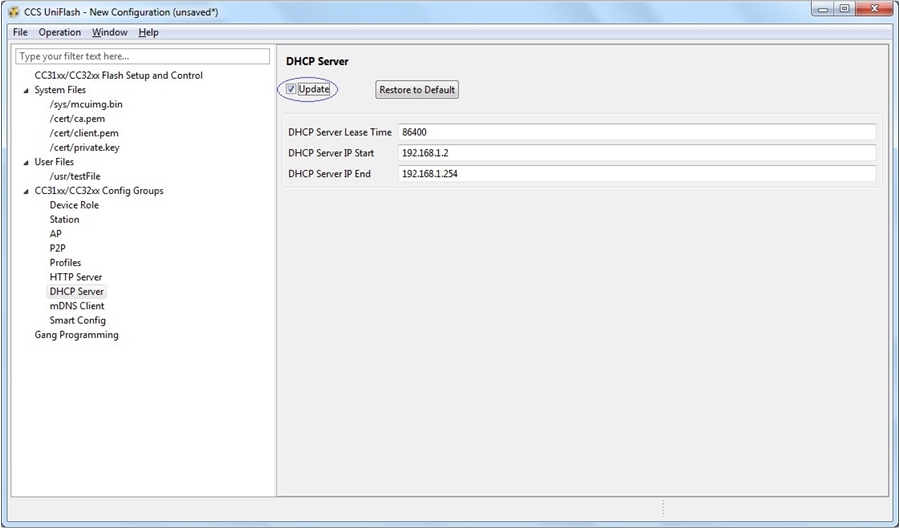SWRU558 June 2020 CC3100 , CC3100MOD , CC3200 , CC3200MOD
-
SimpleLink Wi-Fi CC3100, CC3200 UniFlash
- Trademarks
- 1 Introduction
- 2 Installation
- 3 Prerequisites
- 4 Uniflash Block Diagram
- 5 Session Support
- 6 Secured File System Support
- 7 GUI Interface
- 8 CC3200 Support
- 9 Command Line Support
- 10 Configuration File Support
- 11 Image Creation and Programming
- 12 Troubleshoot/Debugging
- 13 Limitations
- 14 References
- A UART Connection
10.3.6.5 Configuration
Figure 25 shows a screenshot of all DHCP Server parameters. In this screen, the following parameters are defined:
- Dhcp Server Lease Time is set to default 86400
- Dhcp Server IP Start is set to default 192.168.1.2
- Dhcp Server IP End is set to default 192.168.1.254
 Figure 25. Dhcp Server Configuration
Figure 25. Dhcp Server Configuration